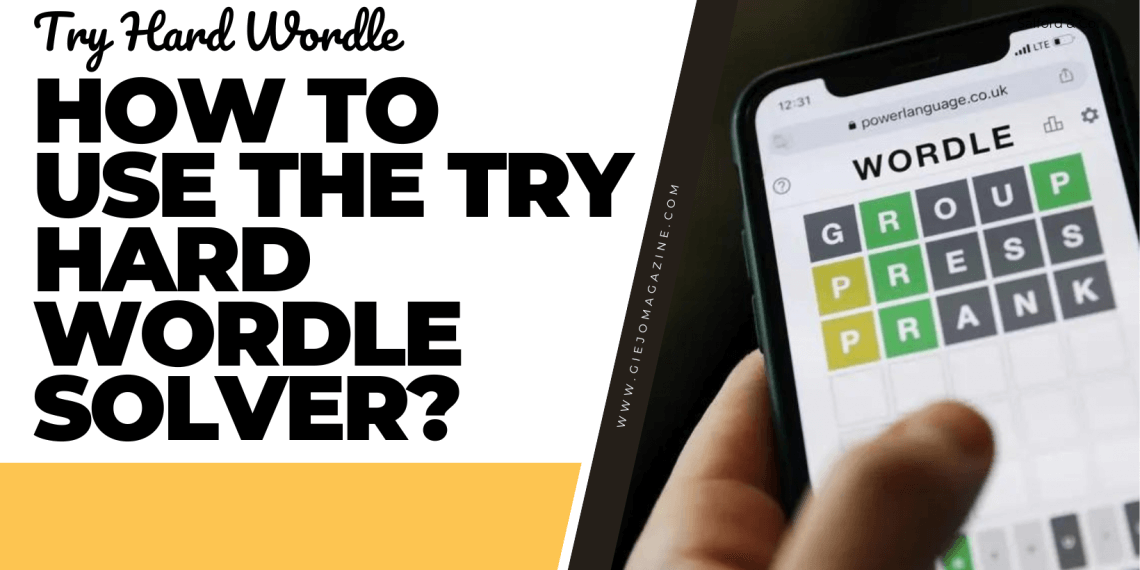How to
How to Use Try Hard Guides Wordle Solver Tool

- /home/busideid/businesslifenow.com/wp-content/plugins/mvp-social-buttons/mvp-social-buttons.php on line 27
https://businesslifenow.com/wp-content/uploads/2023/09/Try-Hard-Wordle-1140x570-1-1000x570.png&description=How to Use Try Hard Guides Wordle Solver Tool', 'pinterestShare', 'width=750,height=350'); return false;" title="Pin This Post">
- Share
- Tweet /home/busideid/businesslifenow.com/wp-content/plugins/mvp-social-buttons/mvp-social-buttons.php on line 72
https://businesslifenow.com/wp-content/uploads/2023/09/Try-Hard-Wordle-1140x570-1-1000x570.png&description=How to Use Try Hard Guides Wordle Solver Tool', 'pinterestShare', 'width=750,height=350'); return false;" title="Pin This Post">
Welcome to Try Hard Guides, where we have created a powerful tool to help you solve Wordle puzzles with ease. In this comprehensive guide, we will walk you through the steps of using our Wordle Solver Tool effectively. Whether you’re a beginner or an experienced player, our solver will enhance your Wordle experience and help you solve those challenging puzzles. Let’s get started!
1. Accessing the Try Hard Guides Wordle Solver Tool
Using our Wordle Solver Tool is quick and simple. To access it, follow these steps:
- Visit the Try Hard Guides website at www.tryhardguides.com.
- Click on the “Wordle Solver Tool” tab in the navigation menu.
- Wait for the tool to load. It should appear on your screen within seconds.
2. Entering the Wordle Puzzle
Once you have successfully accessed the Wordle Solver Tool, you will need to enter the puzzle you want to solve. To do this:
- In the text input box labeled “Enter Wordle Puzzle,” type in the series of 5-letter words that make up the puzzle you’re trying to solve. Use a hyphen to separate each word.
- Make sure to use lowercase letters for all the words.
- Click the “Submit” button.
3. Using the Wordle Solver
After submitting your Wordle puzzle, our solver will go to work and generate a list of possible solutions. Here’s how to make the most of this feature:
- Review the list of results generated by the solver.
- Each result is ranked based on its likelihood of being the correct answer.
- Focus on the top-ranking results, as they are often the most accurate.
- If you’re stuck on a puzzle, try out the different combinations provided by the solver until you find the correct one.
4. Utilizing Advanced Features
Try Hard Guides Wordle Solver Tool also offers advanced features that can enhance your solving capabilities:
- Dictionary Usage: Toggle the “Use Dictionary” option to include or exclude words not found in the dictionary. This can be helpful for learning new words or challenging yourself.
- Word Lengths: Specify the length of the words in the puzzle by using the slider labeled “Word Length.” This can narrow down the search results and increase the solver’s accuracy.
- Previous Results: If you have already used the solver but want to compare new results, click on the “Reset” button to clear the previous results and start fresh.
5. Tips for Using the Wordle Solver Effectively
To make the most of the Try Hard Guides Wordle Solver Tool, keep the following tips in mind:
- Utilize Process of Elimination: When faced with multiple possibilities, eliminate words that don’t fit the available letters or have been ruled out through previous guesses.
- Pay Attention to Word Patterns: Look for common patterns within the solutions generated by the solver. This can help you identify frequently used words or letter combinations.
- Experiment with Different Strategies: Don’t be afraid to try different approaches to solving Wordle puzzles. Use the tool as a guide, but also trust your intuition and explore new techniques.
6. The Benefits of Using Try Hard Guides Wordle Solver Tool
Using our Wordle Solver Tool has numerous benefits that can enhance your Wordle playing experience:
- Save Time: The solver quickly generates possible solutions, saving you the time and frustration of guessing on your own.
- Learn New Words: By toggling the “Use Dictionary” option, you can discover new words and expand your vocabulary.
- Improve Puzzle-Solving Skills: The Wordle Solver Tool helps you analyze patterns, develop strategies, and become a more efficient problem-solver.
Conclusion
With the Try Hard Guides Wordle Solver Tool, solving Wordle puzzles becomes a breeze. By following the simple steps outlined in this guide, you can maximize the tool’s effectiveness and conquer even the most challenging puzzles. Remember to experiment, utilize the advanced features, and trust your intuition as you navigate through the solutions provided. Get ready to elevate your Wordle-solving game with Try Hard Guides Wordle Solver Tool!
Read Also: What is Insurance and Why is it Important?














